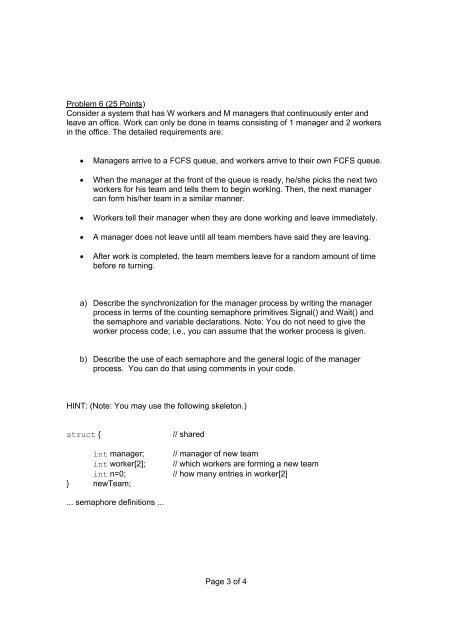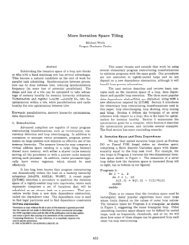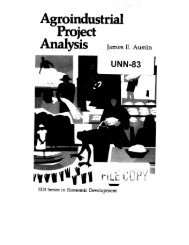PDF format
PDF format
PDF format
Create successful ePaper yourself
Turn your PDF publications into a flip-book with our unique Google optimized e-Paper software.
Problem 6 (25 Points)<br />
Consider a system that has W workers and M managers that continuously enter and<br />
leave an office. Work can only be done in teams consisting of 1 manager and 2 workers<br />
in the office. The detailed requirements are:<br />
• Managers arrive to a FCFS queue, and workers arrive to their own FCFS queue.<br />
• When the manager at the front of the queue is ready, he/she picks the next two<br />
workers for his team and tells them to begin working. Then, the next manager<br />
can form his/her team in a similar manner.<br />
• Workers tell their manager when they are done working and leave immediately.<br />
• A manager does not leave until all team members have said they are leaving.<br />
• After work is completed, the team members leave for a random amount of time<br />
before re turning.<br />
a) Describe the synchronization for the manager process by writing the manager<br />
process in terms of the counting semaphore primitives Signal() and Wait() and<br />
the semaphore and variable declarations. Note: You do not need to give the<br />
worker process code; i.e., you can assume that the worker process is given.<br />
b) Describe the use of each semaphore and the general logic of the manager<br />
process. You can do that using comments in your code.<br />
HINT: (Note: You may use the following skeleton.)<br />
struct {<br />
int manager;<br />
int worker[2];<br />
int n=0;<br />
} newTeam;<br />
// shared<br />
// manager of new team<br />
// which workers are forming a new team<br />
// how many entries in worker[2]<br />
... semaphore definitions ...<br />
Page 3 of 4














![Problem 1: Loop Unrolling [18 points] In this problem, we will use the ...](https://img.yumpu.com/36629594/1/184x260/problem-1-loop-unrolling-18-points-in-this-problem-we-will-use-the-.jpg?quality=85)

